by Gen. Raymond E. Bell Jr.
The tank-destroyer branch of the U.S. Army was possibly the shortest-lived of all the Army’s branches in World War II. By the end of the conflict, the War Department had decided that the tank could take over the mission of defeating enemy armor and that there was no future need for the tank destroyer or any other combat-arms branch.
The demise of the TDs did not come easily, but they were partly doomed by the fact that the development of the tank as tank killer during the war—arguably beginning with the heavier Pershing and its 90mm gun—made the future of the tank destroyer superfluous.
But during the war, the U.S. Army tank destroyer did yeoman service. It was effective not only as a killer of enemy armor but as a source of indirect artillery fire, especially when German tank formations became too few to be encountered. This was especially true in the Italian campaign, where there were no massive tank-versus-tank battles as there were between the Soviets and Germans on the Eastern front.
The concept of a tank-destroyer branch was first tested by the Army during the Louisiana war games in September 1941. One historian wrote, “Tank destroyers performed extremely well against tanks — perhaps because, as the Armor branch alleged, the ‘umpire rules’ were unfairly tilted in their favor. Tanks could only take out anti-tank units by overrunning them, rather than with direct fire.”
Despite this “unfair tilt,” Lt. Gen. Leslie McNair, the chief of Army Ground Forces, authorized the creation of a special tank-destroyer branch, and a tank-destroyer center was established at Fort Hood, Texas. Fifty-three battalions of 842 men each were initially formed, with plans to grow the force to 220 battalions—a plan that was never realized. Eventually the Army fielded 63 TD battalions during the war, 10 of which were deployed to the Pacific Theater.
Dean Kenney, a young man from southern California, became one of the first recruits to this new branch of the Army. His wartime service as a crewmember of the M10 tank destroyer was perhaps typical of some of the battle trials and tribulations encountered by troopers who manned those armored fighting vehicles in combat.
At the age of 16, Kenney was already in the Junior Reserve Officer’s Training Corps at Franklin High School in Highland Park and the Los Angeles City High School District. As a cadet in the corps’ Company B, he not only quickly grasped the essentials of being a soldier but also demonstrated leadership abilities.
On June 4, 1938, he was promoted to the rank of cadet corporal and rapidly advanced to the rank of cadet sergeant, to which he was appointed on October 31. On April 25, 1939, just as he was about to leave school during his junior year, Kenney was again appointed to cadet sergeant after having shown proficiency as a cadet non-commissioned officer.
The scent of war for the United States was in the air when Kenney lived in Hollywood. He had taken a job in a metal-fabrication business while keeping an eye on world developments; he saw the Germans invade Poland on September 1, 1939, followed by the defeat of France in 1940. Great Britain stood alone but defiant while desperately holding off an expected invasion of the British Isles.
When the U.S. was attacked by Japan on December 7, 1941, Dean was working in a defense-industry plant, which precluded his immediate conscription into the armed services. Finally, on February 27, 1943, “Uncle Sam” came calling. Just a few days later, on March 7, he entered active military service.
At age 22, Kenney was a bit older than many of the other young men called to the colors, and his age, previous cadet experience, and maturity soon began to count. He reported for duty and basic training at Camp Hood in Texas (today’s Fort Hood), the home of the Army’s newly constituted tank-destroyer combat-arms branch.
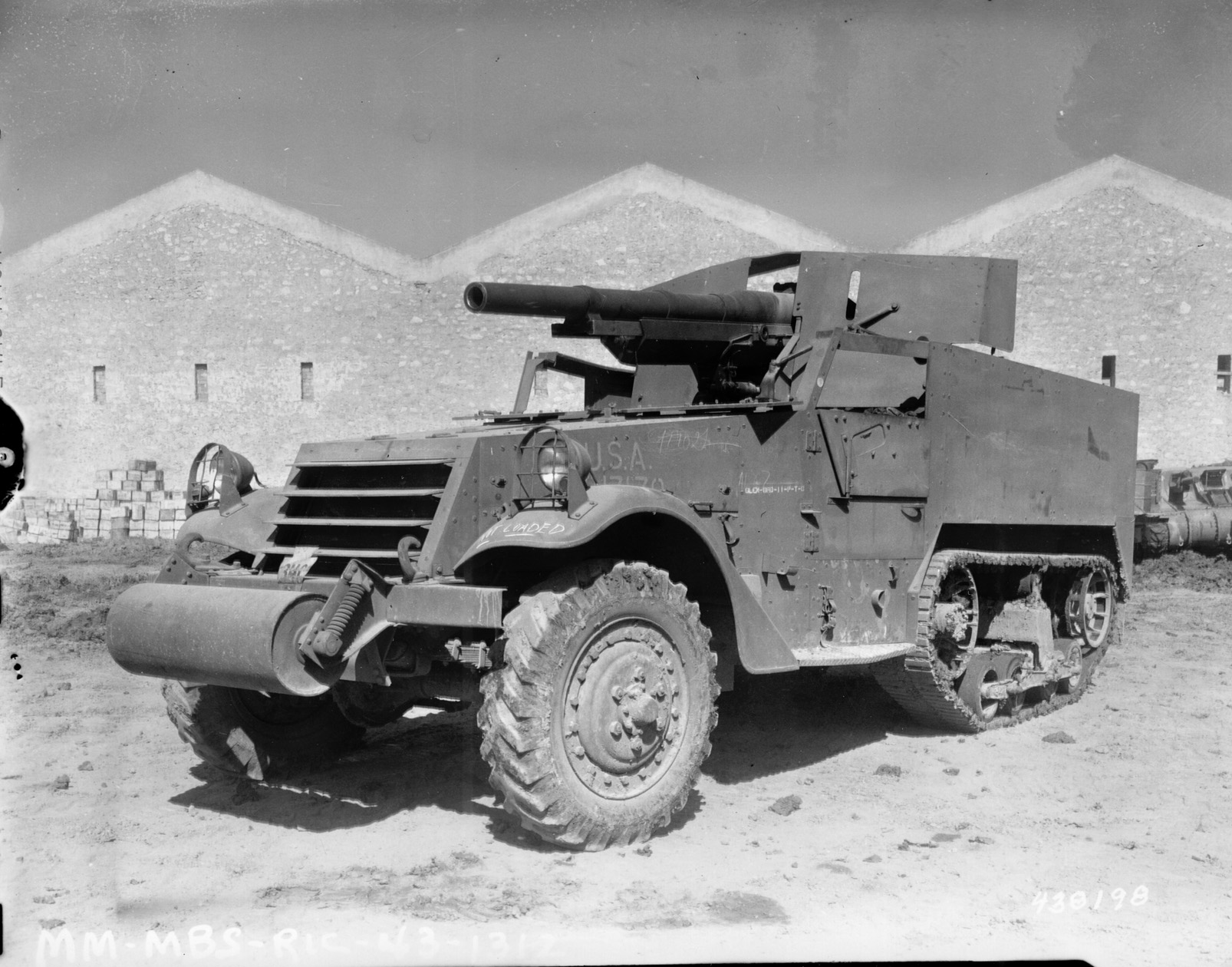
The Tank Destroyer Branch
Shortly after the U.S. went to war against the Axis powers in December 1941, the War Department established tables of organization and equipment (TO&E) for three different types of tank- destroyer units, designated as Tank Destroyer Battalion (Heavy), Tank Destroyer Battalion Light (Self-Propelled), and Tank Destroyer Battalion Light (Towed).
Initially, the heavy tank-destroyer battalion, which was intended to support armored divisions, consisted of three gun companies that were to be equipped with 37mm or 57mm and 3-inch self-propelled (SP) anti-tank guns.
The light, self-propelled-gun battalion, designed to support cavalry and motorized infantry divisions, also had three gun companies, armed with M6 wheeled tank destroyers. The towed tank-destroyer battalion was to have three 37mm anti-tank gun companies.
The anti-tank weapons and vehicles with which these organizations were first armed and equipped were considered expedients. Initially, it was thought that cannon mounted on wheels and drawn by truck were sufficient to engage and destroy enemy armored vehicles. However, the 37mm and 57mm anti-tank guns, either towed or mounted on a 4×4 ¾-ton truck (designated the M6), was to prove completely inadequate in defeating German armored fighting vehicles, which, by the time the U.S. entered the conflict, were becoming heavier, better armor-protected, and more lethally armed.
It soon became apparent that an upgraded anti-tank gun mounted on a protected tracked vehicle with its armament and mobility would be more effective in engaging and defeating enemy tanks. Therefore, gradually throughout the war, the cannon mounted on a self-propelled (SP) tank-like armored body replaced, in many battalions, the more vulnerable and less-mobile towed gun.
The first solution was the M3 Gun Motor Carriage, or GMC, an overloaded M3 halftrack—a vehicle with wheels in the front and tracks in the rear — mounting a French 75mm howitzer on top. Both the M3 and later M6 were lightly armored and lacked turrets.
The M3 was completely unprotected and was not to survive in combat. A Model 1897 75mm cannon was mounted on a standard, unarmored halftrack, the combination seeing its virtual demise in battle in Tunisia early in 1943.
As historian Sebastien Roblin noted, “Though some M3 GMCs resisted the Japanese invasion of the Philippines, tank-destroyer battalions first saw action in the deserts of North Africa starting in 1942.”
The M3s met their demise in the March 23, 1943, battle of El Guettar in Tunisia when the 601st TD Battalion’s 31 halftrack-mounted guns, reinforced by two companies of the 899th TD Battalion (driving the new M10 “Wolverine” TDs), faced off against the entire 10th Panzer Division. When the smoke cleared, 38 panzers had been knocked out, but the 601st had lost 21 of its M3s and the 899th seven of its M10s.
El Guettar was the only battle in which U.S. tank destroyers were used in the manner intended—deployed as an entire battalion to stop a German armored breakthrough concentrated on a narrow front.
At about this time, tank-destroyer unit organization was changing. The heavy tank-destroyer battalion became equipped exclusively with self-propelled tracked vehicles, with the M6 being dropped from the force inventory.
The light, self-propelled anti-tank battalions in cavalry and motorized infantry divisions were moved in the force structure to be grouped at echelons above division, while the cavalry and motorized infantry divisions were being transformed into standard infantry formations.
The towed tank-destroyer battalion was to have its primary weapon upgraded from 37mm or 57mm to the more-powerful 3-inch cannon.
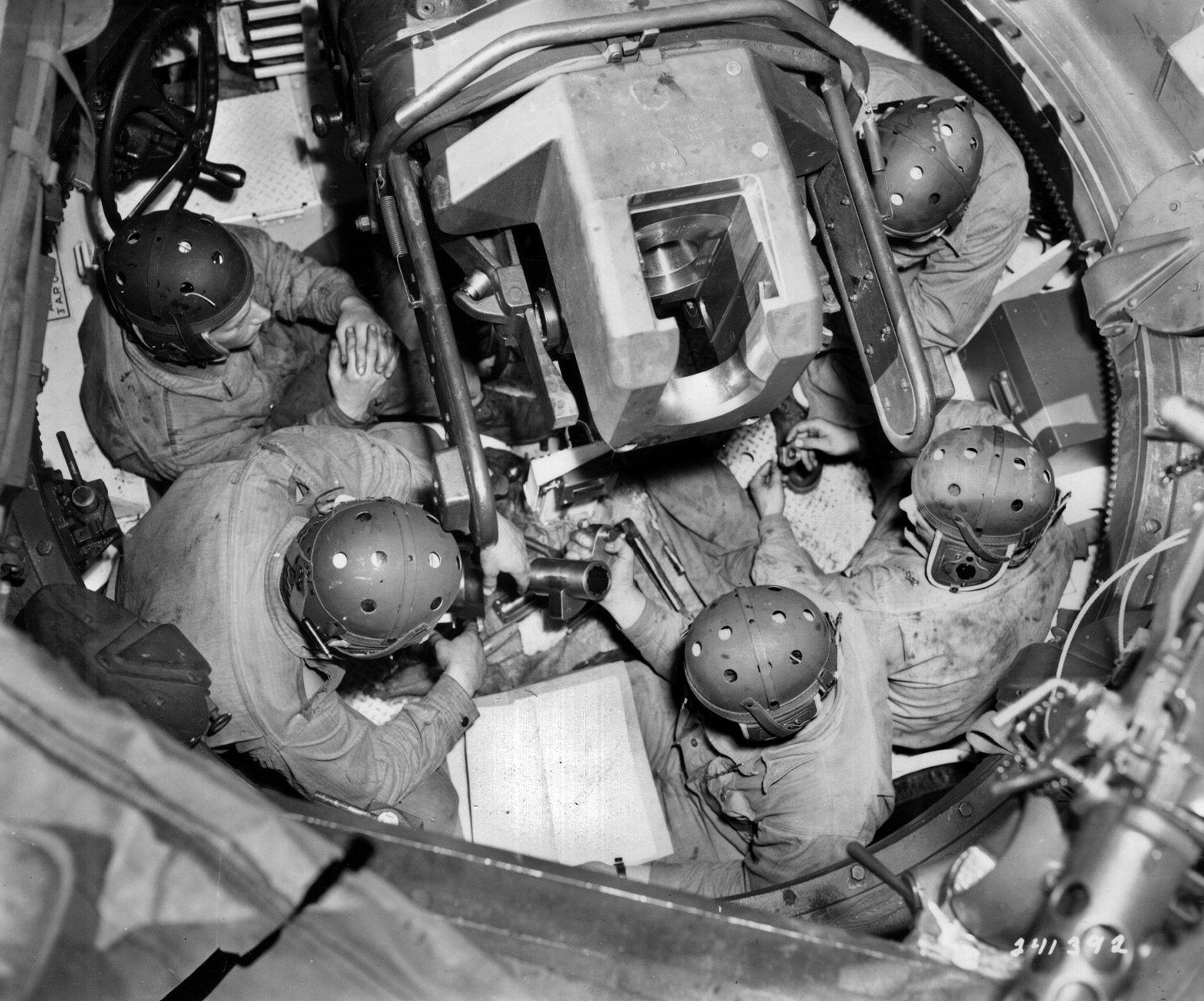
Enter the Wolverine
The successor to the M3 and M6 TDs was the M10 Wolverine, which combined the hull of the M4 Sherman tank and a new, open-top pentagonal turret; General Motors and Ford received contracts to produce 6,400 M10s.
The Wolverine mounted a long-barrel, high-velocity 76mm gun that had better armor-piercing performance than the Sherman’s 75mm gun. But the M10’s hand-cranked turret was slow—it took 80 seconds to complete a rotation—a slow speed that could prove fatal in combat.
And, although the M10’s armor was thinner than the Sherman’s, the M10 was lighter and used less fuel. The open turret, despite being vulnerable to air bursts, also gave the crew a better chance of spotting enemy tanks first.
Combat experience showed that the M10’s 76mm gun was incapable of penetrating the frontal armor of Germany’s heavy tanks at ranges over 400 meters. The gun’s inability to disable and destroy the enemy’s best tanks heightened the generally negative reputation of the TDs.
To solve the armor-piercing problem, in September 1944, newly developed high-velocity, tungsten-core ammunition began to arrive for the 76mm guns that did a better job of destroying German armor at range. Although each Wolverine received only a few rounds of the rare ammunition, they now had a fighting chance against Germany’s heaviest panzers.
As one historian wrote, “In 1944, two additional tank-destroyer types entered service. Buick designed the M18 Hellcat for pure speed. Lightweight and powered by a radial aircraft engine, it could zoom along at 50 miles per hour in an era that tanks rarely exceeded 35 miles per hour.
“However, it had only an inch of armor and was armed with a 76mm M1 gun that was little more effective than that on the M10. Several units in Italy refused the upgrade to the M18—armor was more important than speed in the cramped mountainous terrain.
“But the M18 was popular in Patton’s hard-charging Third Army. While speed is useful for getting armored vehicles where they’re needed, accounts differ as to whether it provided the M18 much benefit at the tactical level. An Army study concluded it was unimportant in tactical combat. Other sources maintain the Hellcat’s speed enabled it in using hit-and-run tactics.”
Late in the war, another TD made its appearance—the M36 Jackson. The “Slugger,” as it was nicknamed, had the hull of the M10 with additional armor and a heavy 90-millimeter gun that was an effective Tiger- and Panther-killer at long ranges (up to four kilometers) and were significantly more effective against infantry. (The Jackson would also see combat during the Korean War.)
Dean Kenney’s initial service was as a crewmember of a tracked tank destroyer, where he became competent at all aspects of operating and “fighting” the vehicle. In June 1943, he was assigned to Company A, 605th Tank Destroyer Battalion (SP), which had been issued the M10 Wolverine. Its 3-inch gun had a 2,800-feet-per-second muzzle velocity and a maximum range of 16,000 yards.
The Sherman M4 tank, on the other hand, armed with a 75mm cannon (many later up-gunned to a 76mm gun) had the primary role of accompanying the foot soldier and giving him a measure of heightened fire support rather than going head-to-head with German armored fighting vehicles. The tank in the armored divisions also served in highly mobile exploitation operations.
Both the M4 tank and M10 TD had the same track configuration. Their shapes were similar, with the primary design difference being that the top of the tank destroyer’s turret was open while the turret of the tank was completely enclosed.
The TD was not intended to engage in close combat but to fight enemy tanks at some distance. This greater distance was also supposed to reduce the tank destroyer’s risk of being hit by overhead or direct enemy fire.
With their different roles, tank and tank-destroyer units were also organized differently. The smallest integral tank unit was a platoon consisting of five armored fighting vehicles, with each tank having a crew of five men. In the M4 tank platoon were 24 enlisted men and one officer, a lieutenant. Tank commanders were sergeants, with the platoon-leader officer also commanding a tank.
The smallest self-propelled tank- destroyer unit was a four-vehicle platoon, each with a five-man crew; the 19 enlisted-man platoon was led by a lieutenant, and each vehicle was commanded, like a tank, by a sergeant or the lieutenant. Three platoons made up a company in both the tank and TD organizations, and the battalions of both had three “line” (M4 tank or SP tank-destroyer) companies.
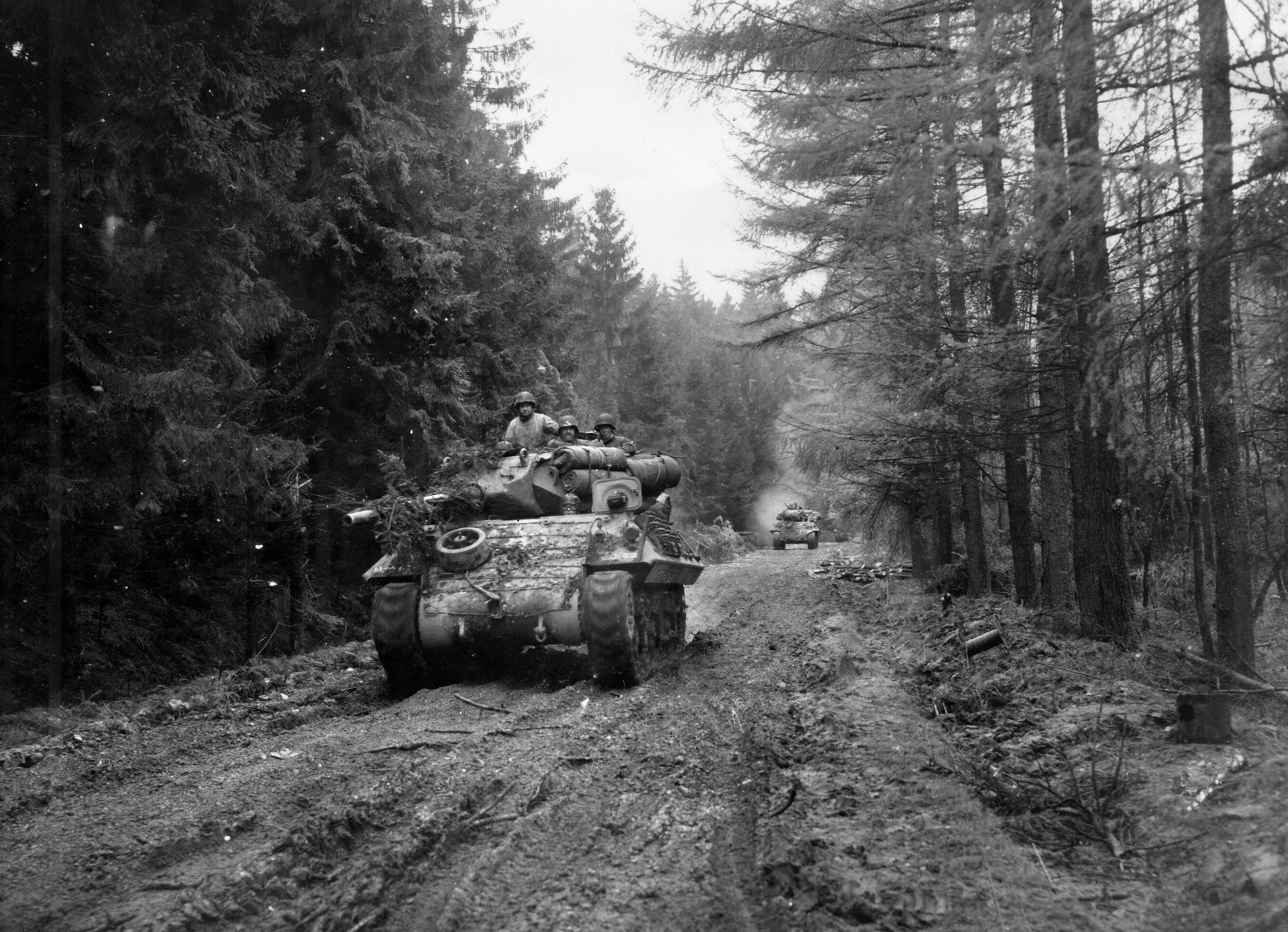
The tank battalion also had a light tank (M3 or M5) company, while the TD battalion had a reconnaissance company. The battalion of either category was the largest completely self-contained tank or tank-destroyer organization, with its own administrative, logistical, and fighting components.
At the time Kenney was inducted into the Army, it was still in the process of rapid expansion. The new tank-destroyer branch was no exception, and it was looking for men with any kind of experience who could be placed in positions of responsibility. He was quickly recognized as being non-commissioned-officer material, and by the end of August 1943, he had attained the rank of Technician 4th Class—an enlisted grade commensurate with that of corporal.
Those soldiers holding the designation of “technician” were assigned military occupation specialties such as vehicle driver, radio operator, or clerk, which did not entail command responsibilities. In a tank-destroyer crew, the vehicle commander would be a sergeant while the driver might be a technician. Kenney at the time, however, was not quite yet a non-commissioned officer (NCO).
Kenney finished his basic military training at Camp Hood and was then posted to Fort Jackson, South Carolina, located outside the city of Columbia, the state’s capital. There he joined the 605th Tank Destroyer Battalion (SP). Now no longer a technician but a sergeant in a command position, he was awarded the Good Conduct Medal on June 3, 1944.
Kenney’s time at Fort Jackson was a busy one. His battalion was armed with the M-10 tank destroyer until March 1944, when the unit was reorganized as a 3-inch towed tank-destroyer battalion and gave up its self-propelled guns. He thus had to transfer his expertise with the more-mobile self-propelled weapons platform to a truck-towed anti-tank gun. Operating and firing the gun, however, were essentially the same for both weapons, so he was easily able to transfer his marksmanship skills to the differently mounted gun.
With the Allied invasion of Northwest Europe in France on June 6, 1944, his days in the United States were numbered. Having advanced to the rank of sergeant and with experience in the employment of both types of anti-tank weapons, his training was about to be put to good use.
Dean Kenney departed the United States on December 10, 1944, as an individual replacement, not as a member of the 605th Tank Destroyer Battalion with its towed anti-tank guns. He arrived in France on December 19, 1944, at a most auspicious moment, as the Germans had just launched their Ardennes Offensive and the Battle of the Bulge, that was fought in Luxembourg and Belgium.
Was he to find himself right in the middle of a major retreat by American troops reeling in the wake of a massive enemy advance? He was soon to find out.
Kenney’s prior training on the Wolverine made him a prime candidate for joining a self-propelled M10 TD battalion that had been badly hurt the previous November while fighting in a dense forest on the Belgian-German border.
The 893rd Tank Destroyer Battalion (SP) had fought a major battle supporting the U.S. Army’s 28th Infantry Division. After losing 16 of 36 M10 TDs, it was in great need of not only replacement vehicles but crews to man them, as well.
Kenney was soon on his way to the 893rd, where he became the vehicle commander of an M10 in Company B. He found the unit conducting minor operations while trying to recover from the hard times it had experienced the previous November. He soon made his mark and, with it, an increase in rank.
When he joined the battalion in December 1944, it had been detached from the 28th Infantry Division and was assigned to support the newly arrived 78th Infantry Division, which had deployed to the Hürtgen Forest battle sector. The American troops in this area at the time were in a defense posture, while, further to the south, hard fighting between the Americans and Germans would take place from December 1944 into February 1945.
The tank destroyers of the 893rd in January and February 1945 had no direct contact with the enemy. Instead, they were employed as if they were artillery howitzers, providing indirect fire support to infantry units heavily engaged in bitter close-in fighting in the dense, forbidding forest.
The Germans were fighting from cleverly concealed concrete bunkers and had to be defeated using special combat techniques. Tank destroyers were ill-designed to engage the enemy under those battle circumstances but they were nevertheless employed to add their direct and indirect fire capability to the artillery-support effort.
Of the subordinate tank-destroyer companies in the battalion, however, Company B was the most active, in spite of problems keeping the vehicles in operating order. For example, it was reported on February 11, 1945, that of the 12 Company B TDs, only nine were combat- ready. The 1st Platoon, to which Kenney was assigned, was short one vehicle, while the 2nd Platoon had only two in working order. Of the other two, one was inoperable because of a malfunctioning radiator and another with its internal wiring burned out.
Company B’s battle sector during this time was centered on the Hürtgen Forest town of Schmidt, the scene of heavy fighting and great American losses the previous fall. It was from that location that the TDs acted as artillery, giving the fire support requested by infantrymen of the 78th Infantry Division. There were, however, few German tanks to be engaged in the area since most were fighting in the Ardennes.
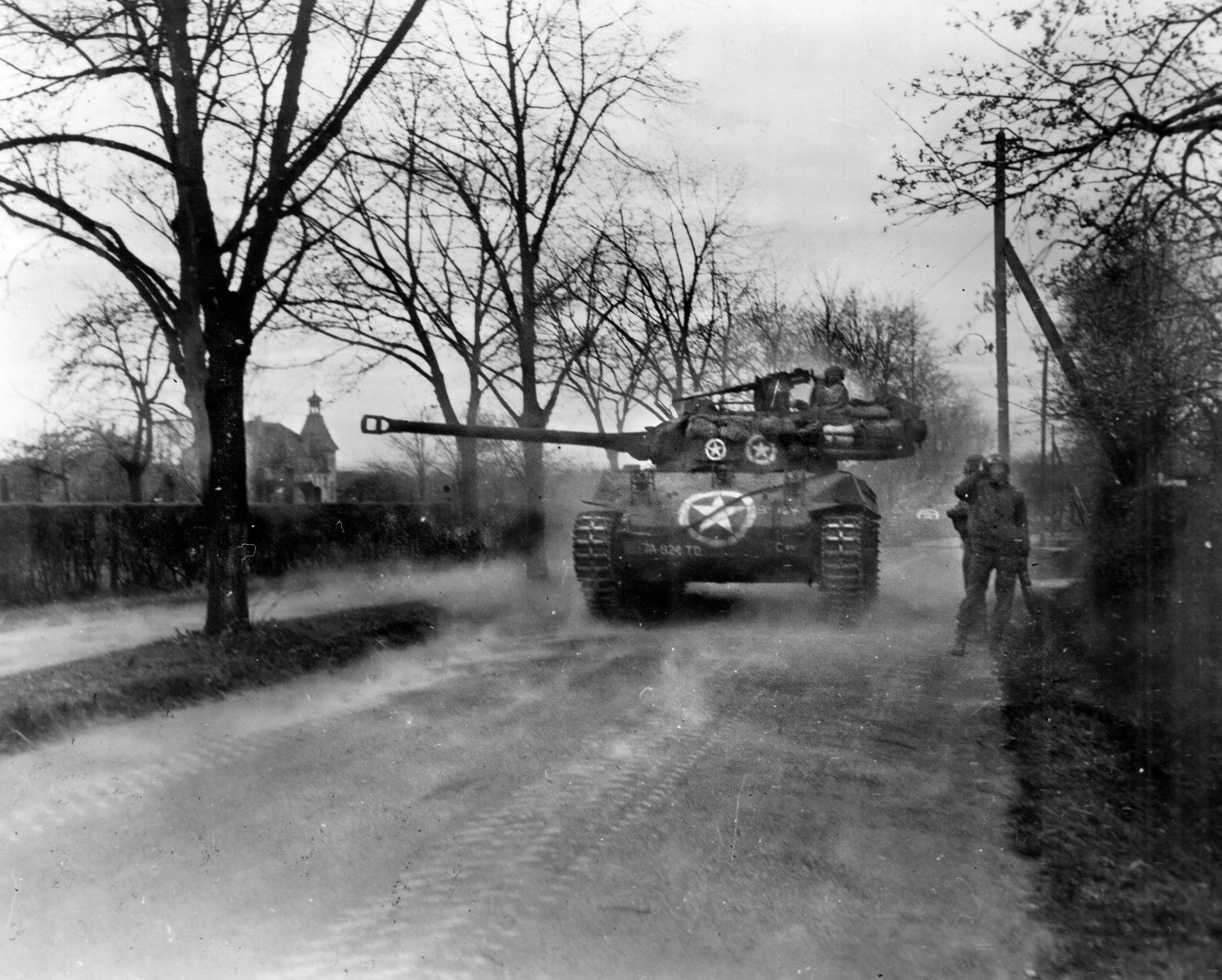
On the Road
Then, in a major February offensive, the Americans pushed out of the Hürtgen Forest onto more open terrain and crossed the Roer River on the way to the Rhine River. The going was tough because the weather was unsettled, with much driving snow, heavy rain, cloudy mist, dense fog, and low temperatures, while many of the roads were torn up, muddy, or unimproved.
On February 23, the 893rd was still in the forest, but not for long, as German tanks and other armored vehicles soon began to reappear as the fighting spilled into terrain more suitable for mobile combat.
At 4:40 p.m. on February 28, Kenney’s 1st Platoon reported to the battalion headquarters that Company B had destroyed one enemy Mark IV tank at a range of 1,000 yards using three armor-piercing capped rounds. Another panzer, a Mark V Panther, was knocked out at a range of 700 yards with two high-velocity armor-piercing rounds. The 1st Platoon also killed five enemy soldiers and destroyed a German observation post using five high-explosive rounds—examples of excellent marksmanship.
The three types of American tank ammunition described above—Armor Piercing Capped (APC), High Velocity Armor Piercing (HVAP), and High Explosive (HE)—were part of the tank destroyer “basic load” of ammunition. Knocking out a German Panther or Tigewith the first-two cited ammunition types was difficult at best.
American gunners had learned that the panzers’ heavy frontal armor meant that the best chance of scoring a decisive hit was to aim at their less-well-armored rear, or at the road wheels. Even then, such hits did not necessarily put the enemy tanks out of action. The American TD’s gun, it was discovered, was more effective against the German medium Mark IV tank.
At the end of February, the Americans were about to find a quick way across the Rhine River—the main natural obstacle to reaching the heartland of Germany and the end of the war in Northwest Europe.
Kenney’s platoon advanced with the rest of the American forces to the Rhine when the still-intact railroad bridge at Remagen was captured. There were no more tank targets for his platoon to engage before the unit itself crossed the river. The tank destroyers, therefore, once again fired in conjunction with the American artillery to deliver indirect fire in support of the troops who had first crossed the Rhine on March 7 and beyond.
Eight days after the first crossing of the river, the 893rd was also on the east shore with the action picking up. Supporting an infantry company of the 78th Infantry Division, Company B’s third platoon knocked out three Tiger tanks, destroyed two armored personnel carriers, and captured 22 prisoners while killing 19 of the enemy.
The weather was also improving, and it was possible for the tank destroyers to move faster. Better roads also made it easier to advance, and drier weather enhanced cross-country movement.
But while action against the Germans was yielding massive numbers of prisoners and the capture of many towns and villages almost without opposition, Company B was experiencing some personnel difficulties.
On March 20, Company B’s commander, 1st Lt. Jack W. Fuller, met with the 893rd Battalion’s commander, Lt. Col. Henry Kerlin, to discuss possible personnel changes in the company—including a request that Kenney, the unit’s senior NCO, be promoted to platoon sergeant of the 3rd Platoon. For Kenney, it was also a step towards becoming the top-ranking soldier in a company—that of first sergeant.
While great progress was being made to master the enemy, American casualties were beginning to add up. On April 5, an M10 in Company B’s 2nd Platoon received a direct hit from a German Mark IV tank or anti-tank gun, wounding all of the TD crew and killing the platoon leader, 1st Lt. William J. Ellis. Luckily, such casualties in the company were few.

Three days later, a report to the battalion headquarters stated that a TD in Company B’s 3rd Platoon had knocked the track off a Tiger tank. The round of ammunition that hit the tank would also have disabled it and, if it also penetrated the tank from the rear, would have killed the crew.
There was, however, no mention in the battalion after-action report specifying the killed German soldiers as being tank crew members, but it is probable that it was this action in which Kenney is described in a memorandum written by another soldier:
“Dean [Kenney] and another [soldier] were told to go on recon [reconnaissance]. I don’t know if they were using M4 Shermans or M10 tank destroyers. They were traveling on a large open area when Dean noticed how much dust they were raising. Dean headed for a somewhat paved road a few minutes later. He heard a large explosion and saw the other tank hit about a quarter-mile away. He knew it was an enemy tank and wondered if he had been seen also.
“He then saw a barn near the road with one wall standing. Dean drove his tank behind this wall. Minutes later they felt the ground shaking and, as Dean looked through the spaces between the wood, it looked like a house had moved there. Dean knew it was a dreaded Tiger. It was on the road, stopped with its very loud engine running.
“Dean started his tank knowing that the Germans would not hear him and backed out and got behind the German tank. He told the gunner to load and he asked what kind of shell; Dean said ‘Anything.’ The gun was lowered but it would have hit the Tiger’s turret. He backed the tank up so the shot would hit the radiator section of the tank. Dean said ‘I knew I penetrated the tank as dust blew out of the hatches and openings. We ran to the tank, opened the hatches; they were all dead.’”
There is no other confirmation of this action taking place in the unit’s after-action report or operations logs and, as is often the case, details in the heat of battle become confused, exaggerated, or non-existent. The memo is to be taken simply as a second-hand recounting of an action that can be viewed as a personal account seen from the perspective of an individual known to Kenney.
While Kenney never purported to be a hero, his competence as a TD leader was recognized a few months after the Northwest Europe campaign ended. He was transferred to the 630th Tank Destroyer Battalion (SP) and promoted to first sergeant of Company C. He held that position when, in March 1946, he returned with the battalion to the United States.
Kenney’s Post-War Military Career
His April 7, 1946, honorable discharge from the U.S. Army did not require further service in the Army, but Kenney nevertheless decided to remain an inactive member of the Army’s Enlisted Reserve Corps. In doing so, he was promoted to the rank of master sergeant.
In June 1950 the North Koreans invaded South Korea. Kenney was not recalled to active duty to participate in that conflict but nonetheless volunteered for an assignment as a trainer with the 31st AAA Brigade at Fort Lewis, Washington.
His performance of duty there led to his consideration for commissioning in the U.S. Army Reserve, but he did not follow through to obtain a commission. His Army career came full circle when, in the spring of 1951, he served, still in the anti-tank mode, on the Tactics Committee of the 7th Armored Division at Camp Roberts, California, located north of Los Angeles.
Due to changes in U.S. Army doctrine, the tank-destroyer branch, with just 63 active battalions at war’s end, was disbanded and replaced by the M26 Pershing heavy tank with a 90mm gun. The last TD battalion was disbanded in 1946.
As one of over 15 million Americans who served in the armed forces during World War II, Dean Kenney, who passed away on April 11, 1998 in Culver City, California, exemplified the type of individual who uncomplainingly did his duty to the best of his ability and played his part in ensuring an Allied victory.
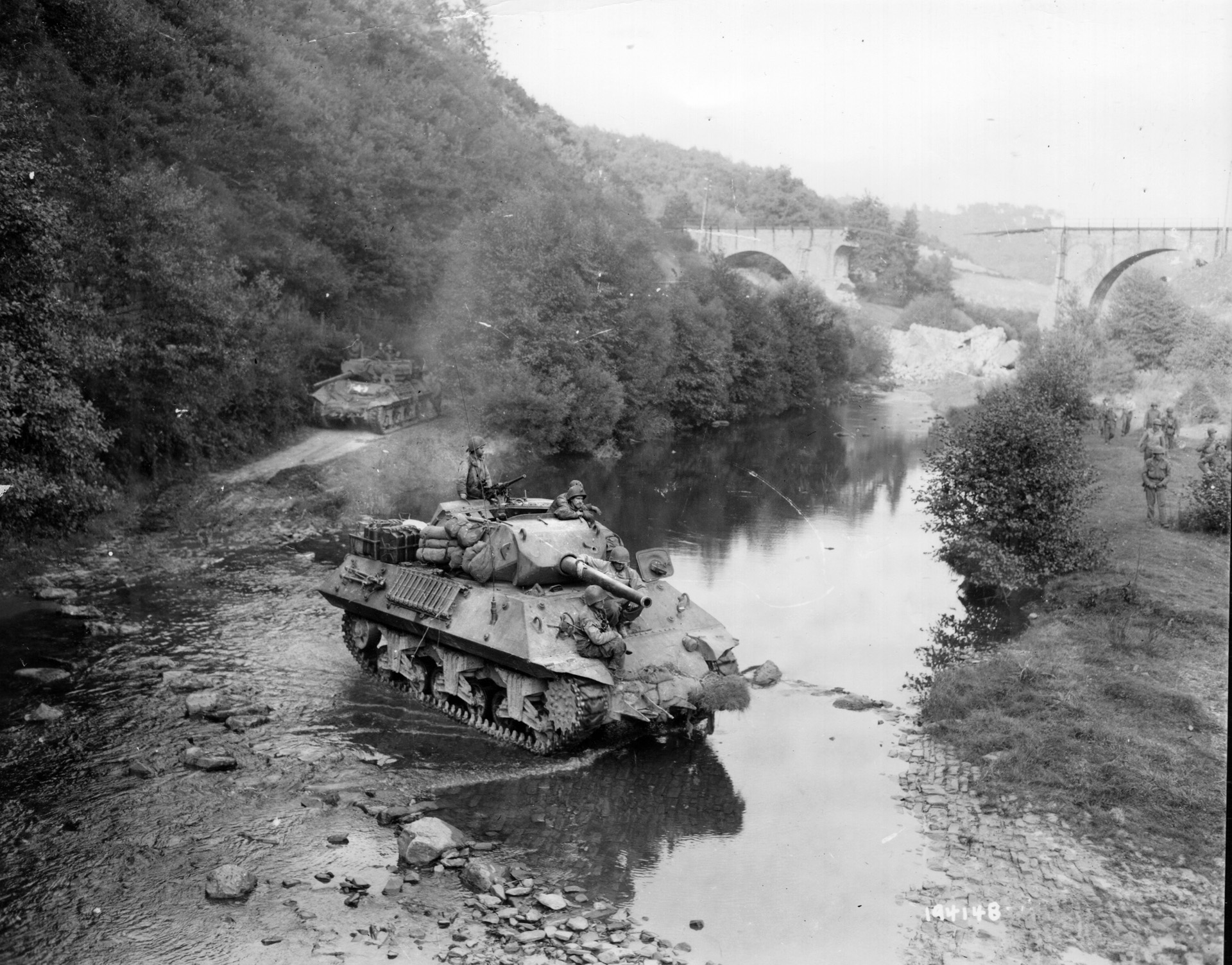
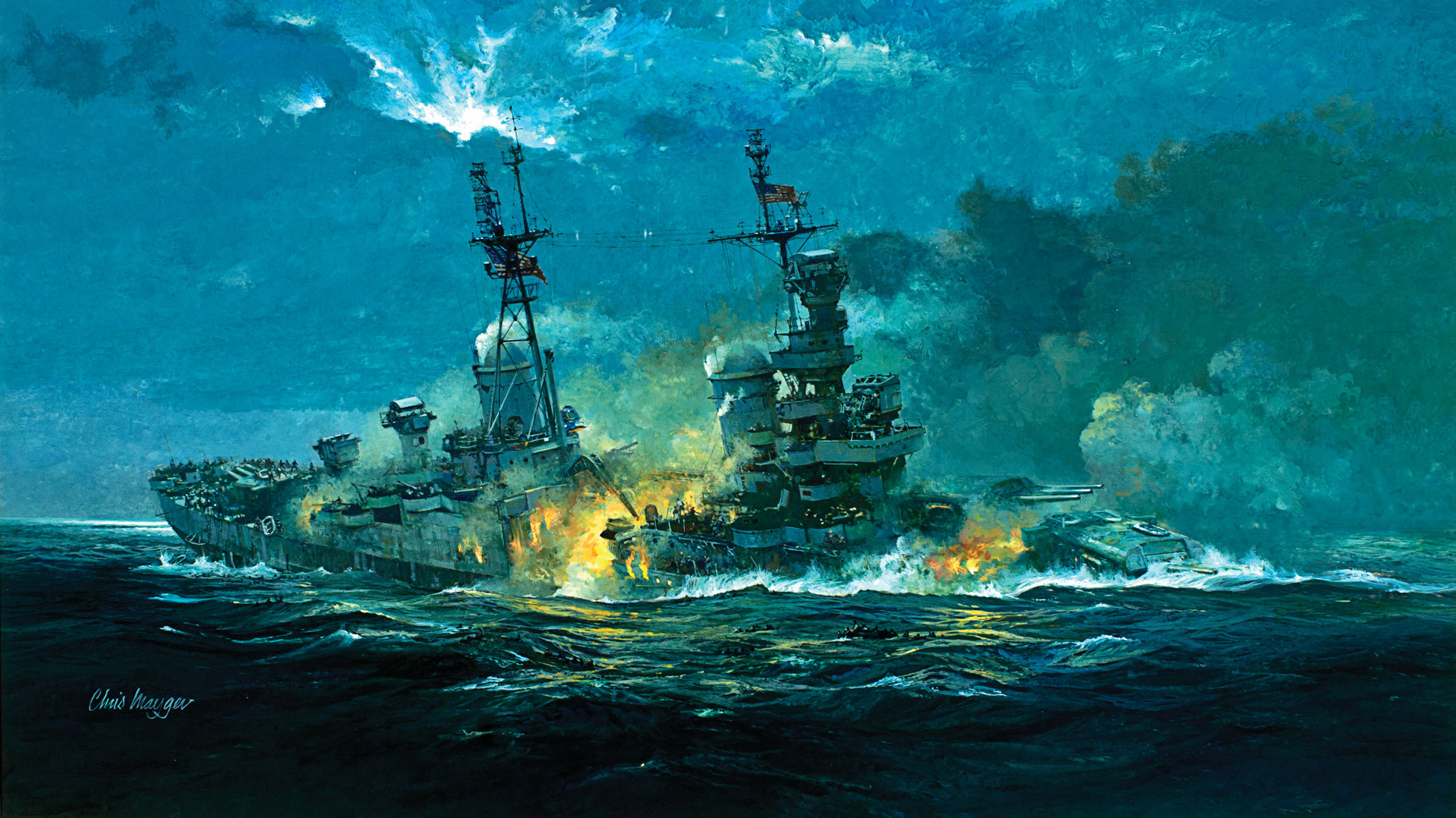
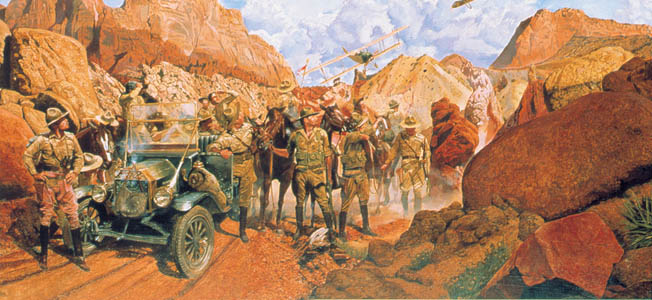
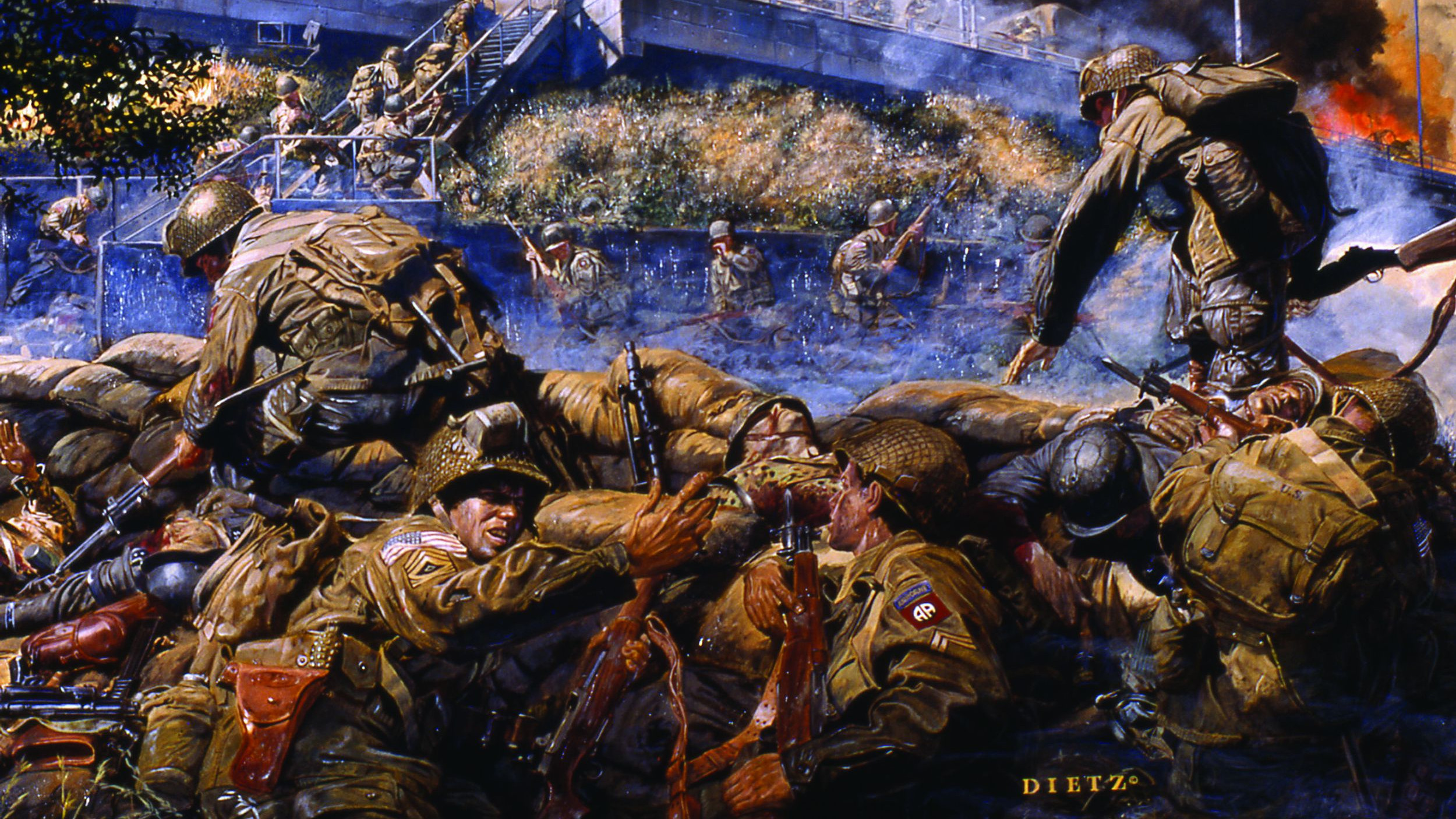
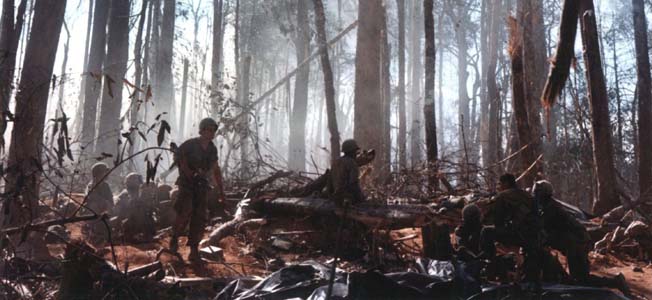
Join The Conversation
Comments
View All Comments